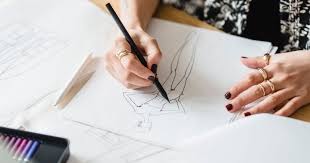Pencil:F9kdhkibbmm= Drawings: The Art of Precision and Creativity

Drawing has been one of the oldest and most essential forms of artistic expression. Among the various tools artists use, pencil drawings hold a significant place due to their versatility and precision. Pencil:F9kdhkibbmm= drawings, in particular, have gained immense popularity for their delicate strokes, attention to detail, and ability to create stunning visual effects.
Whether you are a beginner or an experienced artist, mastering the art of pencil drawing can enhance your creativity and improve your technical skills. In this article, we will delve deep into the world of Pencil:F9kdhkibbmm= drawings, providing valuable insights into techniques, materials, and tips to create incredible artwork.
The Basics of Pencil:F9kdhkibbmm= drawings
Before diving into advanced techniques, it is essential to understand the basics of Pencil:F9kdhkibbmm= drawings. Pencil drawings are all about control, shading, and understanding how light interacts with objects. Here, we will break down the key components that every artist needs to grasp.
1. Types of Pencils for F9kdhkibbmm Drawings
There are different grades of pencils, ranging from soft to hard. Soft pencils (B pencils) produce darker and thicker lines, while hard pencils (H pencils) create lighter, more precise lines. For Pencil:F9kdhkibbmm= drawings, artists often prefer a combination of both to achieve balance between shadow and light.
- Hard Pencils (H range): Best for light shading and intricate details.
- Soft Pencils (B range): Ideal for bold lines and deep shading.
2. Paper Selection for Pencil:F9kdhkibbmm= drawings
Choosing the right type of paper is crucial for achieving the desired texture and depth in Pencil:F9kdhkibbmm= drawings. Textured paper allows pencils to grip better, while smooth paper is ideal for detailed work.
- Smooth Paper: Best for precise work.
- Textured Paper: Perfect for capturing shadows and depth.
Mastering Techniques in Pencil:F9kdhkibbmm= drawings
To create stunning Pencil:F9kdhkibbmm= drawings, one must focus on mastering essential techniques. The ability to blend, shade, and create depth will set your artwork apart from the rest.
1. Blending and Shading in Pencil:F9kdhkibbmm= drawings
Blending is a vital technique in pencil drawings that helps create smooth transitions between light and dark areas. Shading, on the other hand, brings objects to life by highlighting their three-dimensional form.
When working with Pencil:F9kdhkibbmm= drawings, experiment with various shading techniques such as hatching, cross-hatching, and stippling to achieve the desired effect.
- Hatching: A series of parallel lines to create depth.
- Cross-Hatching: Overlapping lines that create texture and tonal variation.
- Stippling: Using small dots to suggest shading.
2. Creating Realism in Pencil F9kdhkibbmm Drawings
Realism is one of the most sought-after skills in pencil F9kdhkibbmm drawings. To achieve lifelike results, artists focus on understanding how light falls on objects and replicating those patterns on paper.
- Highlighting Light Sources: Focus on the lightest areas first.
- Layering: Build up shading gradually for a more realistic effect.
Common Themes in Pencil:F9kdhkibbmm= drawings
Artists often focus on certain themes when creating pencil F9kdhkibbmm drawings. These themes allow them to explore different aspects of the art form while improving their technical abilities.
1. Portraits in Pencil:F9kdhkibbmm= drawings
Portraits are one of the most popular subjects in pencil drawings. The challenge lies in capturing the likeness and expression of the subject with great accuracy. When creating pencil F9kdhkibbmm drawings of portraits, it’s important to focus on facial features, proportions, and the subtle play of light and shadow.
- Eyes: The focal point of most portraits.
Facial Proportions: Mastering how different facial features relate to one another in size, position, and alignment.
2. Landscapes in Pencil:F9kdhkibbmm= drawings
Landscapes offer artists an opportunity to explore vast scenes filled with intricate details. From towering mountains to gentle rivers, landscapes in pencil F9kdhkibbmm drawings allow for experimentation with textures and tones.
- Foreground and Background: Creating depth by focusing on different planes of the landscape.
- Textures: Trees, rocks, and water all have unique textures that need to be represented.
Essential Tools for Pencil:F9kdhkibbmm= drawings
A successful Pencil:F9kdhkibbmm= drawings requires more than just a pencil and paper. Here are some essential tools every artist should consider adding to their toolkit:
1. Erasers
Erasers aren’t just for correcting mistakes. In Pencil:F9kdhkibbmm= drawings, they can be used creatively to highlight areas or create sharp edges. A kneaded eraser, for example, allows for precision.
2. Blending Stumps
Blending stumps or tortillons are used to soften edges and blend shading. They help create smooth transitions and can be essential for achieving realistic shading in Pencil:F9kdhkibbmm= drawings.
3. Pencil Sharpeners
A sharp pencil is crucial for detailed work. Invest in a high-quality sharpener to maintain fine lines in your pencil F9kdhkibbmm drawings.
Tips for Improving Your Pencil:F9kdhkibbmm= drawings
Improving your skills takes time and practice. Here are some tips to help you become better at creating pencil F9kdhkibbmm drawings.
1. Practice Regularly
The more you practice, the better you’ll become. Set aside time each day to work on your pencil F9kdhkibbmm drawings, and focus on improving specific techniques.
2. Study Other Artists
Learn from other artists who specialize in Pencil:F9kdhkibbmm= drawings. Observe their techniques carefully and experiment with applying similar methods to enhance your own style.
3. Experiment with Different Styles
Don’t be afraid to try new things. Experimenting with different styles and techniques in Pencil:F9kdhkibbmm= drawings will help you discover your unique artistic voice.
Conclusion
As art evolves, the appeal of Pencil:F9kdhkibbmm= drawings remains strong. This timeless art form offers endless possibilities for artists to express their creativity and refine their technical skills. By mastering the essential techniques and continuously pushing your limits, you can create beautiful, lifelike artwork that captivates viewers.